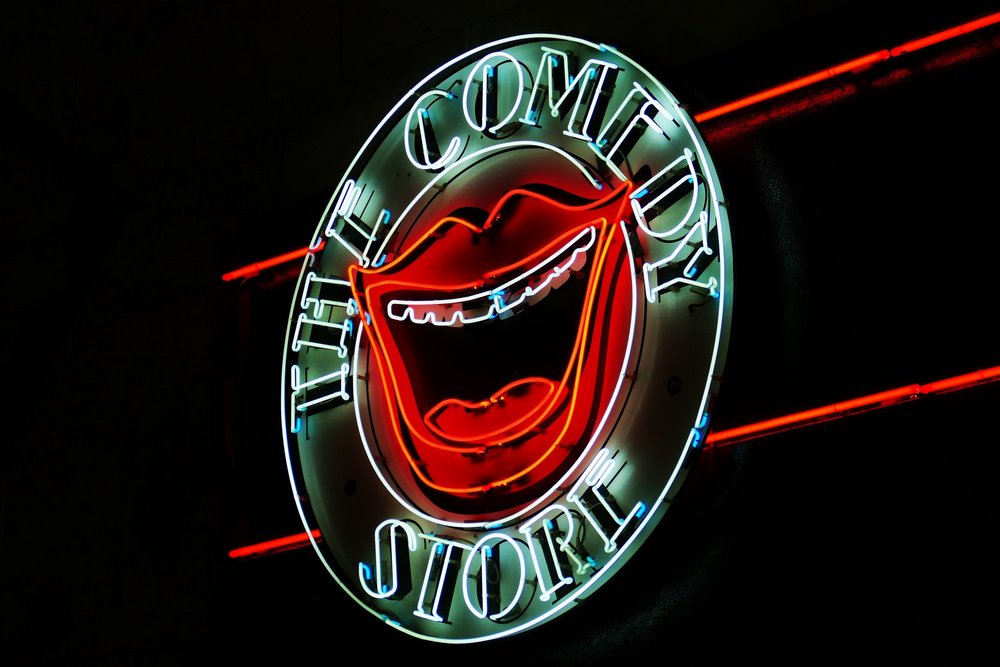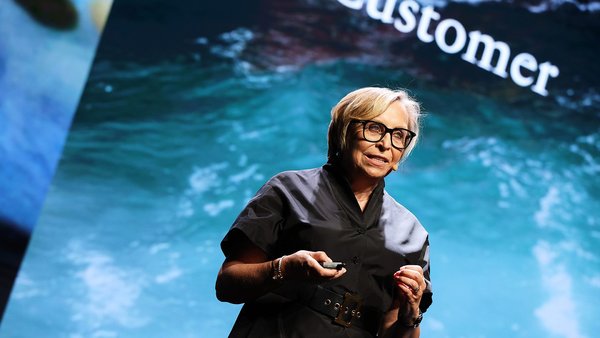Paula Vampré’s Strategy Diet /
Contagious asks top advertising strategists about their media consumption and research habits
James Swift
/
Photo by Call Me Fred on Unsplash
Have you ever wanted to know what the ad industry’s sharpest strategists feed their brains on a daily basis, or what resources they swear by when tackling a brief?
We have. So we’re asking.
Paula Vampré is an IPA Effectiveness Award-winning strategist and the David agency’s first global CSO. She has also worked at Saatchi & Saatchi, creating global positions for Tide and Head & Shoulders, at Ogilvy London, where she worked on Dove, and at BBH London.
What media do you consume that makes you better at your job or helps you think about strategy generally?
I like to think that my appreciation for stand-up comedy (Comedy Central, Netflix specials, or actual venues when those were an option) is helpful to my work beyond its entertainment value – if for no other reason, it makes me feel good about my media consumption habits.
Now in all seriousness, I believe strong comics are the ultimate creative strategists: not only are they sharp thinkers, but brilliant storytellers. They possess an innate ability to distill observations from the most mundane things in life, or if you like, to find the underlying insights within existing data they are exposed to. They are able to touch the hidden truth in all of us prompting concrete reaction – in this case, laughter is their measure of success. Not to mention that stand-up comedy is a wonderful window into what’s happening in different cultures and the nuanced tensions they hold (very handy when you’re a global strategist). I find it very refreshing to feed off of non-industry related stimulus.
Are there any resources that you typically turn to first when working on a brief?
It of course varies according to the nature of the brief, but in broad terms I take it as a twofold approach: the gathering of info and data that presents itself as such (be it client owned data, trend/ category/ consumer/ company reports), and the digging deeper for what isn’t readily available – this requires a more nuanced and intentional observation from accessing my own intuition and perception to getting a pulse on social, chatting to people, etc. For me it’s not either or, it’s both.
Who is someone that you follow/read/watch for their opinions and ideas?
I am a great fan of Jim Carroll’s blog (and Twitter). Jim, a ‘long serving strategist’ in his own words and ex-UK chairman at BBH, is one of the brightest minds I’ve crossed paths with throughout my career. On his blog he uses his vast repertoire in the arts and personal stories to draw great parallels to the reality of businesses and the creative industry. From referencing 1944’s version of Gaslight to talk about the manipulative nature of some sectors (beauty as an example) preying on fears and insecurities in search of persuasion, to using his childhood memories to illustrate how brand management is fundamentally a balancing act between consistency and change. At the end of each post, you can be sure to find a useful reflection, a provocation or a learning to put into practice.
Paula Vampré, David
Is there anyone or any resource that you think strategists rely on too much that is counterproductive or unhelpful?
Oh, the Google planning syndrome... We know Google is both a blessing and a curse, but I would like to point out what I consider to be the greatest issue: it can make us lazy.
I’m sure everyone reading this found themselves at some point resorting to a quick search for something that escaped their minds before actually making an effort to remember it.
It can make one settle more easily. What is a strategist without their urge to interrogate things further?
I’ve seen younger strategists overly rely on it, causing them to miss out on stimulating fresh thoughts when drinking off of other sources, observing the world around them and human dynamics, settling for interesting data points – most sadly losing sight of what an insight is.
What do you think is the most underused resource for better strategy?
Our intuition. As creative thinkers we should tap into it more often than we do. At times it can be more powerful than any other tool. It’s about combining our minds and our life-long acquired observations and experiences. That’s why it is so important that we live an interesting, prolific life, stimulated by diverse sources, our environment and by those who are different to us. It all adds up to shape it. Let’s listen to our intuition more and put it to work.
Is there anywhere you go when you’re struggling with a brief or a place that seems to help you work or think?
Back in the day I used to go outside for a cigarette break... By the time I’d be back at my desk I had cracked it. I don’t attribute it to the dopamine release triggered by nicotine, but rather, the action of putting my mind elsewhere. And that’s exactly what I do today in different ways. I consciously engage with something completely unrelated, preferably enjoyable, to then pick up from where I left it. It always works.

Photo by Andres Siimon on Unsplash
Office etiquette: music or no music?
Having music in the office is always a great way to lift the spirits and foster interaction – at the end of the day this business thrives off of how people interact with one another. But…if I’m working on something that requires my undivided attention, I will hide somewhere that I can hear nothing but my thoughts.
What’s the best free resource for a strategist?
I have touched a bit on it already but, I believe living a richly stimulated life is a wonderful resource. The more diverse, unusual and curious things we do, the more diverse, unusual and curious will be our personal database.
What sort of media/resources would you recommend to someone just starting their career as a strategist?
I would encourage every young strategist to eat up the award-winning IPA effectiveness case studies (one of the world’s most rigorous and prestigious awards). These papers bring an obsessive commitment to demonstrating the commercial impact driven by nothing but communications. They might be harder to read since they’re data heavy, but there is no better way for a young professional to truly understand what commercial creativity is and the tangible value that strategy brings. The new generations of strategists are at risk of settling for engagement and impressions as the only measures for success.

What’s something that happened in pop culture that showed a better understanding of people than advertising?
Nathan Apodaca. Better known as the Ocean Spray Guy, or online by his handle @420doggface208, he became an instant hit with his TikTok video back in September last year. He sings along to Fleetwood Mac (Dreams) while drinking cranberry juice on his longboard on his way to work. As it has been described, the video is a whole vibe – simple as that. A ‘whole vibe’ is exactly what we needed. In an unprecedented year of pandemic when we somehow lost sight of how it would be possible to genuinely feel good with what is, despite the barrage of content generated with that intent, Nathan managed to unpretentiously show us that it’s totally possible.
If you're looking for insights to super-charge a pitch, competitor analysis for a client meeting or the best case studies for an important keynote, the Contagious team can help you out.
Contagious on Demand is a bespoke service (with an average NPS of 9.3) that lets you ask our team of editors and strategists (just about) any question. Simply fill out the form here, detailing your request, and we'll get back to you with inspiration, insight and advice in as little as 48 hours.
Want more of the same? /
We don’t just write about best-in-class campaigns, interviews and trends. Our Members also receive access to briefings, online training, webinars, live events and much more.







